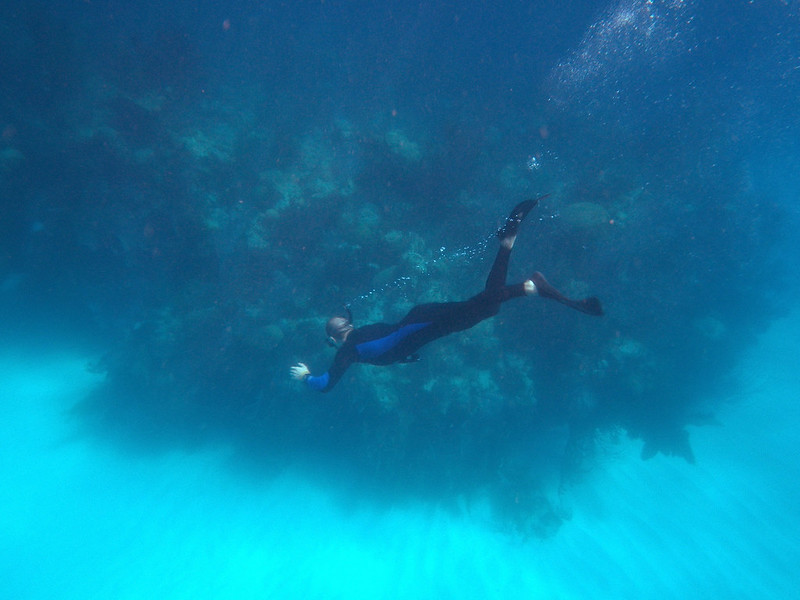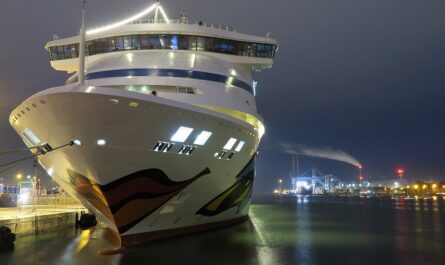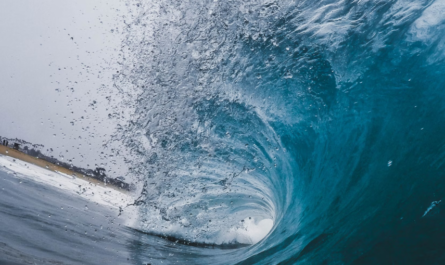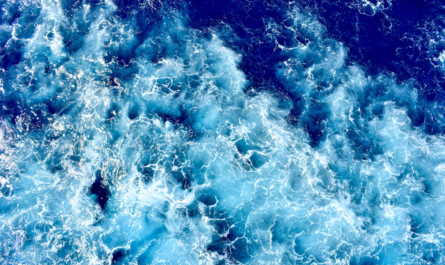Bermuda, a jewel of the North Atlantic, is often associated with its pink sandy beaches, turquoise waters, and enigmatic tales of the Bermuda Triangle. However, beneath its shimmering waves lies a treasure trove of history and marine biodiversity—the wrecks of ships that met their fate navigating the treacherous reefs surrounding the island. For diving enthusiasts, historians, and adventurers, these underwater sites offer a rare opportunity to explore marine archaeology at its finest.
This article delves into the rich history, biodiversity, and unparalleled diving experiences awaiting those who dare to explore Bermuda’s sunken secrets.
The History Behind Bermuda’s Wrecks
1. A Dangerous Passage
Bermuda’s location in the Atlantic, along a major maritime route, made it a vital stop for ships during the Age of Exploration, colonial expansion, and global trade. However, its surrounding coral reefs earned it a reputation as a “shipwreck capital.” Over 300 wrecks lie scattered around Bermuda, many dating back centuries.
- The Treacherous Reefs: Bermuda’s reefs, while beautiful, are some of the most extensive in the Atlantic. Hidden beneath the waves, these natural obstacles claimed countless vessels, particularly during storms and hurricanes.
- Historical Context: The wrecks span centuries, from Spanish galleons of the 16th century to World War II freighters, each telling a unique story of trade, conflict, and exploration.
2. The Bermuda Triangle Mystique
While Bermuda’s wrecks are not necessarily tied to the mysterious disappearances of the Bermuda Triangle, the region’s reputation adds an aura of intrigue. These wrecks provide tangible evidence of the perils faced by seafarers navigating this part of the Atlantic.
Exploring Bermuda’s Iconic Wrecks
Bermuda’s wrecks are renowned not only for their historical significance but also for their accessibility and biodiversity. Here are some of the most iconic wreck sites that divers can explore:
1. The Mary Celestia
A Civil War-era blockade runner, the Mary Celestia sank in 1864 while carrying supplies, including wine and perfume. This wreck offers a fascinating glimpse into history.
- Depth: 55 feet (17 meters)
- Highlights: Intact hull sections, artifacts like wine bottles, and its unique association with the American Civil War.
- Marine Life: Schools of fish, sponges, and coral formations.
2. The Cristóbal Colón
The largest shipwreck in Bermuda, this Spanish luxury liner ran aground in 1936. Its size and diversity make it a favorite among divers.
- Depth: 15 to 55 feet (5 to 17 meters)
- Highlights: Massive boilers, propellers, and remnants of luxury cabins.
- Marine Life: Turtles, barracudas, and vibrant reef fish.
3. The Hermes
A more modern wreck, the Hermes was intentionally sunk in 1984 to create an artificial reef. It is one of the best-preserved wrecks in Bermuda.
- Depth: 80 feet (24 meters)
- Highlights: The intact ship structure makes it perfect for penetration dives.
- Marine Life: Rays, parrotfish, and groupers.
4. The Constellation
The Constellation, a wooden schooner, sank in 1943 while carrying medicine and building materials. It is said to have inspired Peter Benchley’s novel The Deep.
- Depth: 30 feet (9 meters)
- Highlights: Scattered cargo and the unique wooden frame of the ship.
- Marine Life: Corals, lobster, and colorful reef fish.
5. The Montana
Another Civil War-era blockade runner, the Montana is famous for its advanced engine design and historical significance.
- Depth: 30 to 40 feet (9 to 12 meters)
- Highlights: Machinery, boilers, and well-preserved hull sections.
- Marine Life: Snappers, angelfish, and diverse corals.
The Biodiversity of Bermuda’s Wrecks
Bermuda’s shipwrecks are not just historical artifacts; they are vibrant ecosystems teeming with life. Over time, coral and marine organisms colonize the wrecks, turning them into artificial reefs.
1. Coral Growth
The wrecks are covered in hard and soft corals, which form the foundation of these ecosystems. Species like brain coral, elkhorn coral, and sea fans thrive in the nutrient-rich waters.
2. Marine Life
The combination of wreck structures and surrounding reefs creates ideal habitats for marine species.
- Fish Species: Angelfish, butterflyfish, snappers, and groupers are commonly seen around Bermuda’s wrecks.
- Pelagic Visitors: Sharks, rays, and turtles frequently patrol the waters around these sites.
- Macro Life: Nudibranchs, crabs, and shrimp inhabit the crevices of the wrecks, making them a paradise for underwater photographers.
3. Ecological Importance
The wrecks contribute to Bermuda’s marine biodiversity by providing refuge and breeding grounds for fish and other marine species. They also play a role in coral conservation by diverting divers from natural reefs.
The Diving Experience in Bermuda
1. Accessibility
Bermuda’s wrecks are renowned for their accessibility. Many are located within a short boat ride from shore, and the island’s clear waters provide excellent visibility, often exceeding 100 feet (30 meters).
2. Diving Conditions
- Best Time to Dive: May to October offers warm waters and calm seas, ideal for diving.
- Water Temperature: Ranges from 75°F (24°C) in summer to 65°F (18°C) in winter.
- Experience Levels: Wrecks are available for all skill levels, from shallow sites like the Constellation to deeper, more challenging dives like the Hermes.
3. Unique Features
- Snorkeling Opportunities: Many wrecks are shallow enough for snorkelers to enjoy, making Bermuda’s wrecks accessible to non-divers.
- Night Diving: The wrecks take on a mysterious allure at night, with bioluminescent plankton and nocturnal marine life creating a surreal experience.
Marine Archaeology in Bermuda
1. Historical Significance
Bermuda’s wrecks are invaluable to marine archaeologists, offering insights into maritime history, shipbuilding techniques, and historical trade routes.
2. Preservation Efforts
The Bermuda government, along with organizations like the Bermuda Underwater Exploration Institute (BUEI), works to protect these wrecks.
- Wreck Listings: Many sites are protected under law, ensuring they remain undisturbed.
- Artifact Recovery: Some artifacts, like cannons and ceramics, are preserved in museums, while others are left in situ to maintain the wreck’s integrity.
Tips for Exploring Bermuda’s Wrecks
- Choose a Reputable Dive Operator: Local dive operators offer guided tours tailored to various skill levels. They also prioritize safety and environmental conservation.
- Practice Responsible Diving: Avoid touching or disturbing the wrecks and marine life to preserve these sites for future generations.
- Capture the Moment: Bring an underwater camera to document the stunning visuals of Bermuda’s wrecks and marine biodiversity.
- Learn the History: Familiarize yourself with the history of each wreck before diving to enhance your appreciation of the experience.
Beyond Wreck Diving: Exploring Bermuda’s Marine Wonders
While wreck diving is a highlight, Bermuda’s marine environment offers more to explore:
- Reefs: Bermuda’s coral reefs are some of the healthiest in the Atlantic, teeming with marine life.
- Blue Holes: These underwater sinkholes are a unique geological feature worth exploring.
- Kayaking and Paddleboarding: The island’s calm, clear waters are perfect for surface-level exploration.
Conclusion: A Journey Through Time and Nature
Diving Bermuda’s wrecks is more than an underwater adventure—it’s a journey through history, nature, and human resilience. Each wreck tells a story of triumph and tragedy, now intertwined with the vibrant marine life that calls these sites home.
Whether you’re a seasoned diver or a history enthusiast, Bermuda’s wrecks offer a unique opportunity to connect with the past while marveling at the wonders of the present. As you descend into the depths of the Atlantic, you’ll discover not only the remnants of human endeavor but also the beauty and fragility of the ocean’s ecosystems.



